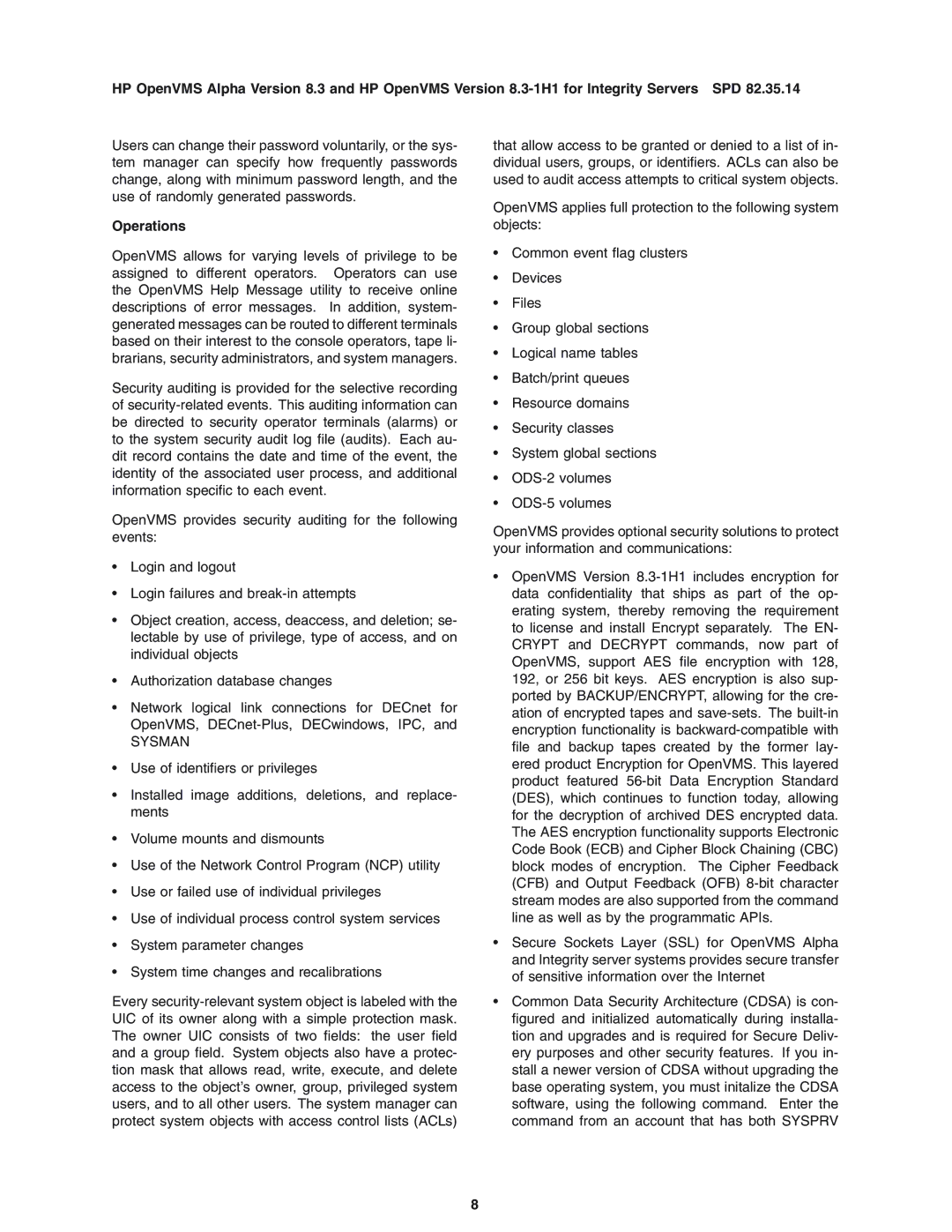HP OpenVMS Alpha Version 8.3 and HP OpenVMS Version
Users can change their password voluntarily, or the sys- tem manager can specify how frequently passwords change, along with minimum password length, and the use of randomly generated passwords.
Operations
OpenVMS allows for varying levels of privilege to be assigned to different operators. Operators can use the OpenVMS Help Message utility to receive online descriptions of error messages. In addition, system- generated messages can be routed to different terminals based on their interest to the console operators, tape li- brarians, security administrators, and system managers.
Security auditing is provided for the selective recording of
OpenVMS provides security auditing for the following events:
•Login and logout
•Login failures and
•Object creation, access, deaccess, and deletion; se- lectable by use of privilege, type of access, and on individual objects
•Authorization database changes
•Network logical link connections for DECnet for OpenVMS,
SYSMAN
•Use of identifiers or privileges
•Installed image additions, deletions, and replace- ments
•Volume mounts and dismounts
•Use of the Network Control Program (NCP) utility
•Use or failed use of individual privileges
•Use of individual process control system services
•System parameter changes
•System time changes and recalibrations
Every
that allow access to be granted or denied to a list of in- dividual users, groups, or identifiers. ACLs can also be used to audit access attempts to critical system objects.
OpenVMS applies full protection to the following system objects:
•Common event flag clusters
•Devices
•Files
•Group global sections
•Logical name tables
•Batch/print queues
•Resource domains
•Security classes
•System global sections
•
•
OpenVMS provides optional security solutions to protect your information and communications:
•OpenVMS Version
•Secure Sockets Layer (SSL) for OpenVMS Alpha and Integrity server systems provides secure transfer of sensitive information over the Internet
•Common Data Security Architecture (CDSA) is con- figured and initialized automatically during installa- tion and upgrades and is required for Secure Deliv- ery purposes and other security features. If you in- stall a newer version of CDSA without upgrading the base operating system, you must initalize the CDSA software, using the following command. Enter the command from an account that has both SYSPRV
8
